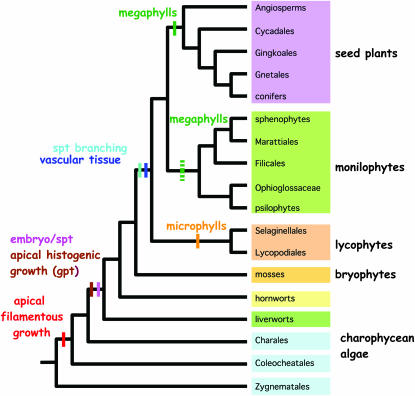Figure 1.
Major developmental innovations in land plant evolution with relationships of green plants inferred from recent molecular and morphological phylogenies (Bremer et al. 1987; Gugerli et al. 2001; Karol et al. 2001; Pryer et al. 2001). Some nodes are controversial, such as those of the bryophytes, but the discrepancies do not affect the positions of the major innovations. The production of tissues from an apical meristem maps to the common ancestor of land plants although apical filamentous growth evolved in an algal ancestor (McCourt et al. 2004). Leaf-like organs evolved independently at least three times in the lycophytes, monilophytes, and seed plants. The simpler leaves of lycophytes are called microphylls and the more complex leaves of monilophytes and seed plants are called megaphylls. The broken green bar in the monilophyte ancestor represents the uncertainty concerning the number of origins of leaves within this clade. Roots likely had multiple origins as well, but the paleobotanical record is unclear and so we have not mapped them here.

